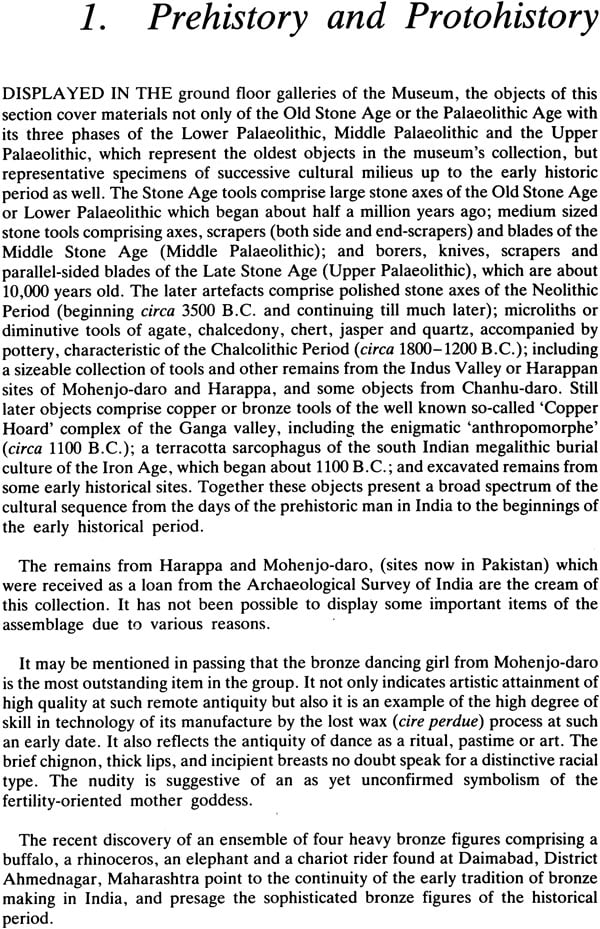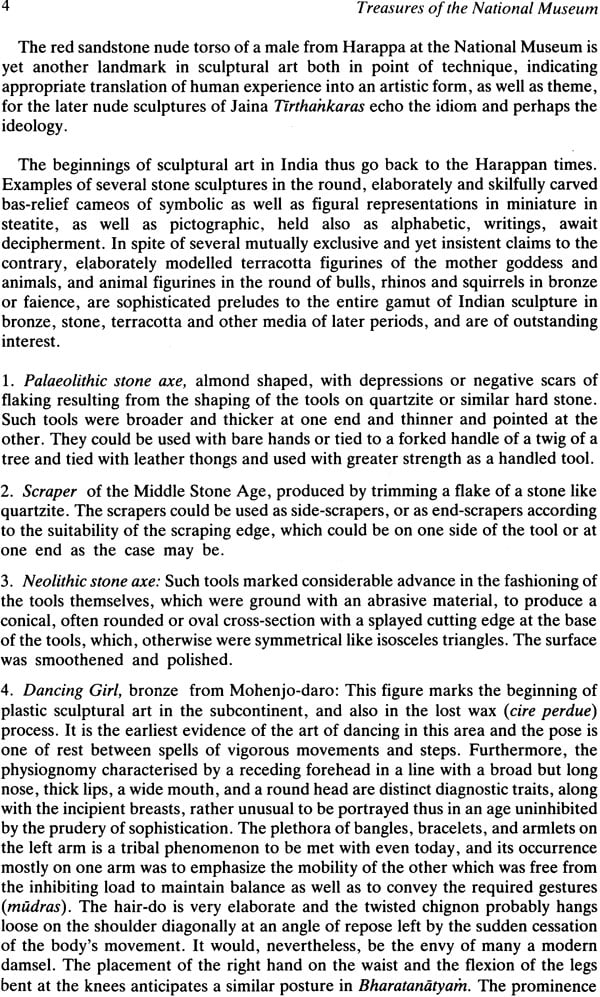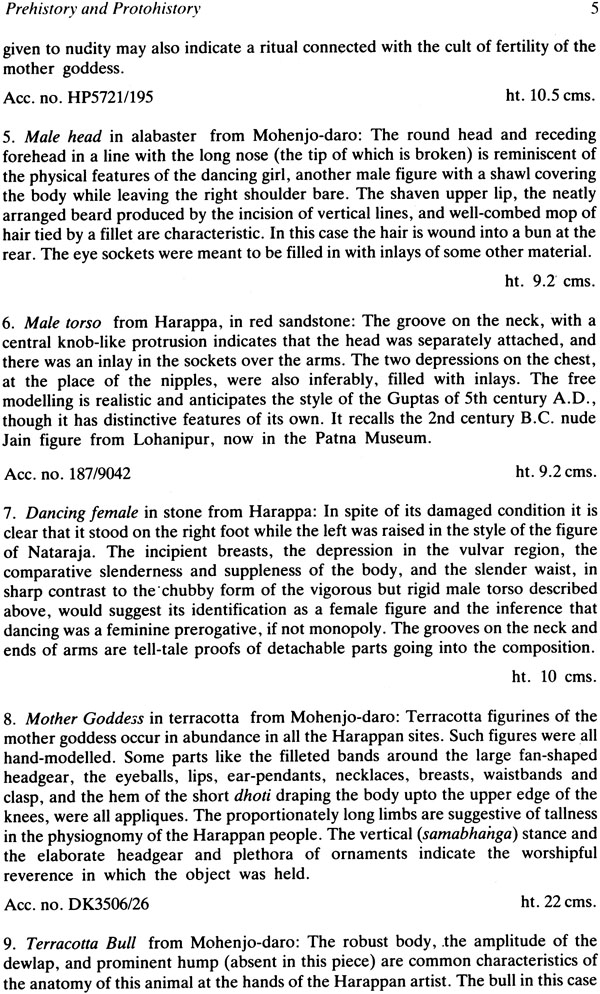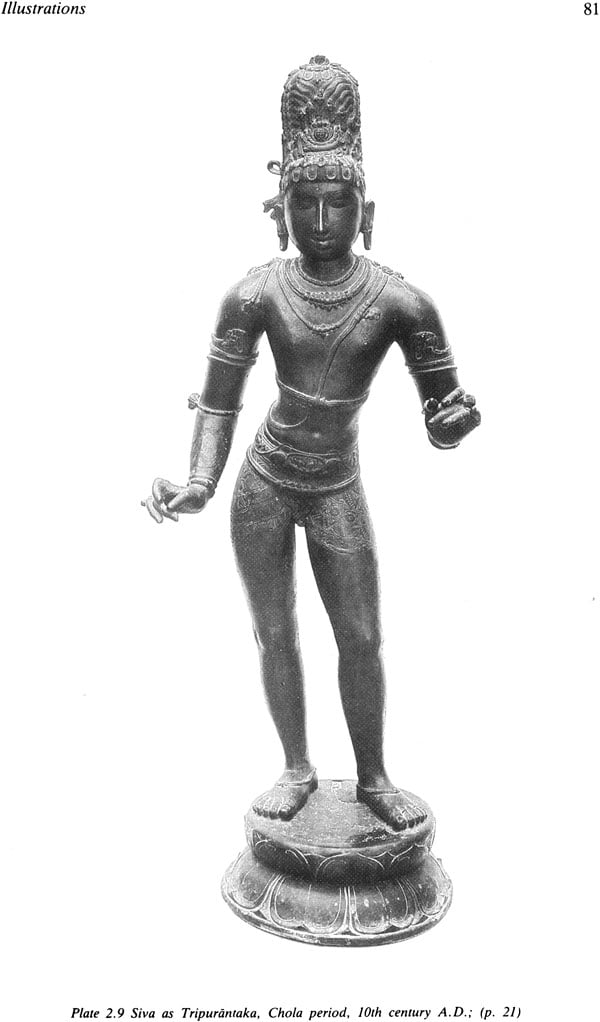
Treasures of The National Museum
Book Specification
| Item Code: | NAB102 |
| Author: | Dr. N.R. Banerjee |
| Publisher: | Publications Division, Government of India |
| Language: | English |
| Edition: | 1992 |
| Pages: | 138 (B&W. illus.:10) |
| Cover: | Hardcover |
| Other Details | 9.9" x 7.4" |
| Weight | 570 gm |
Book Description
The National Museum in New Delhi is one of the richest storehouses of the cultural heritage in the world. A handy book of the type of “The Treasures of the National Museum’ was, therefore, a long felt necessity as much for the general visitor, as for the students and scholars. The Publications Division has taken the laudable step to fill this lacuna. A book of this type cannot be exhaustive, nor can it be of the nature of a research work. The information has to be accurate as well as not too lengthy. I am grateful to the Publications Division for calling upon me to write this book.
In undertaking this task, I have received the fullest measure of cooperation from all my curatorial colleagues in the museum, most of whom are still serving this great institution. Some have since retired; some however, also are no more with us. I avail myself of the opportunity to thank them all. I am also particularly beholden to Dr. L.P. Sihare, the present dynamic Director, for his ready cooperation and for his arrangements to supply the photographs which illustrate this book.
If this little book provokes the curiosity of the reader and urges him or her to visit the museum to explore and wander and enjoy and ponder over the museum visits, I shall feel amply rewarded.
We are what we are today because of the contributions of our forbears, predecessors as well as contemporaries to all aspects of sciences and arts that help sustain our lives. Most of this enormous legacy remains unrecorded in the form of archaeological evidence awaiting either discovery or interpretation. Some are in the form of written records, the script of which is yet unknown, or not fully known, such as the records on the Indus seals.
Man has created in his moments of leisure a large volume and variety of arts. These are classified into (i) creative arts, and (ii) performing arts. While the former include literature, sculpture and painting, the latter encompass dance, music and drama. All these have in their own way enriched and ennobled our lives and are the common heritage of man. It is, therefore, absolutely necessary to know the basic aspects of all these arts for the full development of the human mind.
Our ancient sages had said, "Sahitya Sangeeta Kalavihina Sakshat Pasuh puchchha-vishanahina"; which means that those unacquainted with literature, music or the arts are just like animals without tails and horns. There are infinite aspects of man and nature which the common man would not have visual experience of or learn about but for the phenomenon of museums, libraries, art galleries, all of which belong together. Museums serve in their infinite variety as storehouses of human and natural heritage all over the world. Museums thus are essential institutions for informal education and enlightenment, often with entertainment to the masses.
The need of a large number of museums spread over the entire expanse of the country and within easy reach of the people cannot, therefore, be overemphasised. Not all museums can, however, be of the same size, nor can they be prototypes of, one another. The pattern should be, a museum of national status at the apex with gradations varying in size and contents at the state capitals, district headquarters, towns and large or centrally situated villages which would be of easy access to its clientele as a broad general distribution. Many variants within the framework must exist and be permissible.
The Museum movement is rather young in India. While the British Museum in London, one of the world's greatest, goes back to 1753, it was in 1814 that the first museum in India, called the Indian Museum, was set up in Calcutta. However, it was not until 1945 that the idea of a National Museum of art, archaeology and anthropology was seriously considered. 1his was done in the wake of Sir Leonard Wooley's recommendation for setting up a National Museum in New Delhi, in 1939 after several abortive attempts in 1912-13 and 1925, and a positive recommendation from Markham and Hargreaves in 1936.
In 1946 an elaborate scheme was drawn up for a National Museum by a Committee appointed by the Government of India under the chairmanship of Sir Maurice Gwyer, then Vice Chancellor of the University of Delhi. Sir Mortimer
Wheeler, in his capacity as Director General of the Archaeological Survey of India, was the principal source of inspiration for formulating the basic principles of the Museum. Dr. N.P. Chakravarti, then Deputy Director General of Archaeological Survey of India was closely associated with the formulation of the scheme.
The fortunate circumstance of the high acclaim received by a large exhibition of Indian arts and crafts, lent by the major museums of India and even private owners and sent out by the Government of India and held at Burlington House in the winter months of 1947-48 inspired and encouraged the Government of India to exhibit them in Delhi upon their return, for the benefit of the people of India, before their dispersal to the lenders. Pandit Jawaharlal Nehru's foresight and support as the first Prime Minister of free India provided the motive force of this exhibition. The exhibition was organized at the State Rooms of the Rashtrapati Bhavan in 1949. The idea that the same materials may be used as the nucleus of the National Museum then occured to the authorities; and the Government of India then tried and succeeded in persuading most of the lenders to part with some of their loans for constituting the National Museum in larger national interests. This fact accounts for the high quality of the materials that were thus used to set up the 'then incipient National Museum at the State Rooms (Durbar Hall) of the Rashtrapati Bhavan as a temporary measure till the museum had its building. It opened on August 15, 1949.
Meanwhile, an impressive plot of land between Maulana Azad Road and Rajpath to the east of Janpath was earmarked for the National Museum. The building plan was designed by the architect Deolalikar and the foundation was laid by Prime Minister Pandit Jawaharlal Nehru on May 12, 1955. The museum was formally inaugurated by Dr Sarvepalli Radhakrishnan, on December 18, 1960.
The displays of its 10 departments, representing all aspects of art and archaeology and anthropology, cover the main facets of human creativity in the fields of arts and crafts. They are mutually complementary and the arrangement of the presentation is chronological so that the idea of beginning, growth, development and decline in each field can be understood in an integrated historical perspective. Viewers can see from the presentation the shift to the modern-works of arts and craft and understand that development is a legacy from the past. It is a continuous process pulsating with life. They help to link the present with the past. The displays are arranged in twenty-two galleries, three of which lie in the adjacent building of the Central Asian Antiquities Museum (founded in 1929), which is now part and parcel of the museum, being received as a legacy from the Archaeological Survey of India from the very beginning; and four where temporary exhibitions are held, cover a broad and truly national spectrum of the art, archaeology and anthropology of India, and sometimes even of foreign countries.
The museum was looked after by the Archaeological Survey of India till 1957, when it was constituted as a separate department under the control of the Government of India. Apart from the usual ancillary Departments that support the various activities of the Museum, the ten departments that hold the objects display a rich fare of the cultural heritage of India and of some foreign countries. These comprises: (i) Prehistory and Protohistory, (ii) Archaeology, (iii) Numismatics and Epigraphy, (iv) Miniature Paintings and Wall Hangings, (v) Manuscripts, (vi) Decorative Arts and Textiles, (vii) Anthropology, (viii) Central Asian Antiquities, (ix) Arms and Armour, and (x) Pre-Columbian and Western Arts.
The National Museum thus began as a collection of borrowed specimens from various museums in India and the generous long-term loans of the Archaeological Survey of India, as it had to be built up from scratch. Its nuclear collection was good in quality but small in number.
If it had to serve as an exemplary museum of the nation in its own areas of specialization its collections needed to be enlarged rapidly. This was made possible by the setting up of an Art Purchase Committee and the provision of a generously increasing annual grant from the Government of India for the purpose. Through the process of inviting sales of art objects and antiquities and paying adequately for the objects, a large collection has been built over the years since its inception.
But the collection was the first step towards building up of the museum. Adequate arrangements were simultaneously made for rendering the objects free from acids, and those of organic nature free also from infection by worms and insects, through fumigation as the very primary step. The next step of chemical conservation followed suit. This principle was insisted upon for implementation before allowing the objects to find their way into the stores or galleries of the museum, lest they should affect their companions. The National Museum can, therefore, boast of a very well-equipped laboratory and a well-trained and expert technical personnel for the purpose of continuing with this vital act of caution in anticipation.
| Introduction | xi | |
| 1 | Prehistory and Protohistory | 3 |
| 2 | Archealogy | 8 |
| 3 | Numismatics and Epigraphy | 25 |
| 4 | Miniature Paintings and Wall Hangings | 28 |
| 5 | Manuscripts | 32 |
| 6 | Decorative Arts and Textiles | 36 |
| 7 | Anthropology | 41 |
| 8 | Central Asian Antiquities | 44 |
| 9 | Arms and Armour | 46 |
| 10 | Pre-Colombian and Western Art | 52 |
| 11 | Periodical Exhibitions | 57 |
| 12 | Other Activities | 59 |
| List of Plates | 61 | |
| Illustrations | 65 | |
| Index | 135 |













